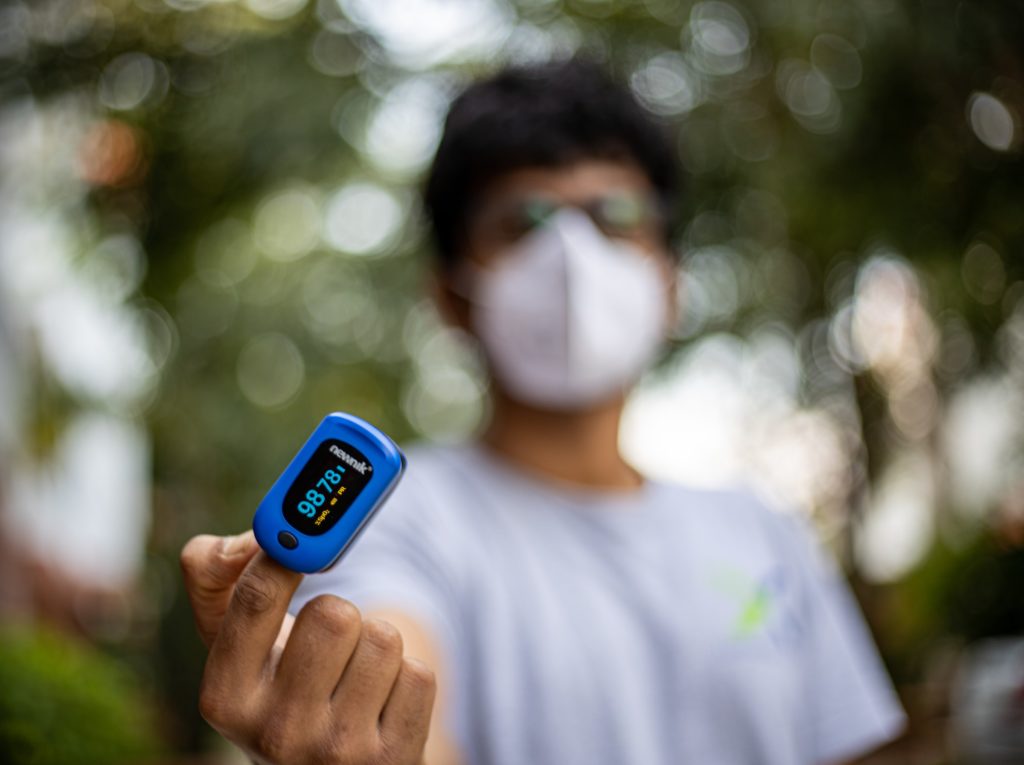ISD Health Solutions is a leading provider of sleep and respiratory care in the Caribbean region. As a company, we have decided to take up the mantle in the fight against Covid, the best way we know. In these pandemic times, we are on a mission to educate the public on the effects of covid and preventative measures that are immediately available to them.
One of the mysteries of Covid-19 is why oxygen levels in the blood can drop to dangerously low levels without the patient noticing. This phenomenon is known as “silent hypoxia”.
As a result, patients have been arriving at hospitals in far worse health than they realised and, in some cases, too late to treat effectively.
But a potentially life-saving solution, in the form of a pulse oximeter, allows patients to monitor their oxygen levels at home.
Clinical Director of ISD Health Solutions, Mr Gregory Arneaud, has rolled out these devices for high-risk Covid patients in the Caribbean region, and he says, everyone should consider buying one.
A pulse oximeter is a device that checks to see how much oxygen your blood is carrying. It’s a fast, simple way to learn this information without using a needle to take a blood sample.
Usually, a small clip is put on the end of your finger. (Sometimes it’s put on your toe or earlobe.) The device shines a light beam through the skin. It estimates your oxygen level by measuring the percentage of your blood that’s carrying oxygen. Your oxygen level (or oxygen saturation, SpO2) shows on the display screen.
Pulse oximeters are used in doctors’ offices and hospitals. Your doctor may think it’s a good idea for some people to use one at home. This may include people who have a condition that affects their oxygen levels. Examples include people who have long-term heart or lung problems or an infection like COVID-19.
Oxygen levels
Mr Arneaud, a highly experienced respiratory therapist, said, normal oxygen levels in the blood is between 95% and 100%.
Usually, a low blood oxygen level causes symptoms like fatigue or shortness of breath. But with COVID-19, you may not have symptoms from a low oxygen level. Your doctor may suggest checking your oxygen level at home. This can help you know when you need medical attention even if you don’t have symptoms.
How do you use a pulse oximeter?
Turn on the pulse oximeter. (Check that it has batteries.) Clip it on the end of a finger, with your nail facing up. You’ll see the results in a few seconds.
The device gives two results: your blood oxygen level (SpO2) and your pulse rate (PR). Your doctor can help you know what numbers are normal for you.
The device may not show any results if you have cold hands or you wear nail polish or artificial nails. Warm your hand, remove the nail polish or nail or try a different finger.
Your doctor may suggest checking your oxygen level 2 times a day, during exercise, or anytime your symptoms get worse. Keep a record of your levels in case you need to show it to your doctor.
When should you call for help?
Your doctor probably told you what numbers to watch for when you use your pulse oximeter. If not, here is some guidance.
Call your doctor if your blood oxygen level (SpO2) drops below 95%. This is true even if the number only drops when you’re active. If you have certain health problems, like COPD, your oxygen level may always be lower than 95%. Ask your doctor what oxygen number you should expect when using your pulse oximeter. Find out which number is a sign that you should call for help.
Watch closely for changes in your health, and be sure to contact your doctor if your symptoms get worse or if you are not getting better as expected.
iSDHS is the most recognised Caribbean Sleep and Respiratory Solution Provider in the Region. Our team was assembled to fill the gap of the lack of medical expertise and knowledge, in the areas of sleep and respiratory disease management. ISD boasts world-renowned, Caribbean born physicians with over 60 years combined experience in Sleep Medicine. To speak to one of our physicians, book an appointment here.


